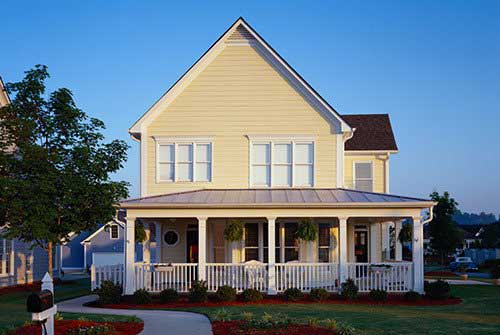Keep Your Home's Foundation In Optimal Condition Using These Tips And Tricks

A home's foundation is often overlooked when it comes to property management, yet it plays a vital role in maintaining the integrity of your home overall. A poorly functioning or damaged foundation can lead to the development of cracks in the drywall, broken and uneven tiles, damaged wood flooring, and even crooked windows and doors.
Following are a few things you can do to keep your home's foundation in optimal condition in the years to come.
Commit to Daily Watering
If the soil under your foundation gets too dry or too wet, it can negatively affect your foundation's overall condition. If the soil is dry it will shrink, which will reduce the support it provides for your foundation. And when it gets wet again it will expand which could put unnecessary stress on your foundation.
So it's important to make sure that the foundation gets watered regularly, especially when it's dry outside. You can use a sprinkler, a drip irrigation system, or hand water the foundation with a hose. Commit to watering your foundation once or twice a day for about 30 minutes at a time, more often when it's extra dry outside.
Install Some Downspouts
Just as you can't let the soil under your foundation get to dry, you also need to stop it from getting too wet by making sure that rain water drains away from your home so it can't puddle and soak into the ground. Easily do this by installing downspouts on your gutters.
The downspouts can be attached to each end of your gutters and should be extended several feet away from your home so no water can roll back toward the house as it comes out of the drain. Base rock and mulch or soil can be used to hide and protect the extended downspouts on the ground.
Keep the Foundation Embedded
Another effective way to make sure that your foundation stays in good shape throughout the coming years is to embed the foundation on a regular basis. The process involves applying compacted soil around the foundation to help retain water during dry Texas months.
If the compacted soil around your foundation is less than 2 inches below the top of the slab, it's a good idea to apply layers of soil until it sits about 2 inches below the slab. You need to compact each layer of soil you apply throughout the process.
If you've never embedded a foundation or seen it done before, a professional foundation company can do the job for you at least once. This will allow you to learn how the process works first-hand, and enable you to do the job yourself in the future if needed.
Relocate Trees and Shrubs
If any shrubs or trees are located too close to your home, their roots can cause foundation damage and their tendency to fight for water during the dry season can make the soil under your foundation unstable. Large trees can absorb up to 150 gallons of water from the ground on any given day, which can make it tough to keep the ground and soil under your foundation moist.
Consider installing a root barrier around your home a few feet away from the foundation, and relocate any trees, plants, and shrubs that are inside the barrier to some on the property outside of the barrier. You can always install root barriers around any trees or shrubs that you don't want to relocate and that are still small enough that their roots haven't gotten to close to your house.
Feel free to contact us to learn more about using any of the techniques outlined here. We're also happy to professionally take care of your foundation for you. Just schedule an appointment!
BROWSE OUR WEBSITE
CONTACT INFORMATION
Address: 5326 Trafalgar Drive Houston, TX 77045
Phone: 713-434-8432
Fax: 713-434-8483
Email: bonillafoundation@sbcglobal.net
Licensed, bonded & insured






